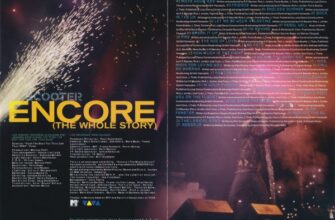Moscow`s Helikon-Opera has once again captivated audiences, not with a scandal off-stage, but with a sensational on-stage “double murder” – the dramatic centerpiece of their new season premiere: Sergei Prokofiev’s early and notoriously elusive opera, Maddalena. This isn`t a police report; it`s a deep dive into a cultural event that merges historical rediscovery with daring contemporary staging.
The Case of the Missing Score: Prokofiev`s Early Opus
Imagine a young Sergei Prokofiev, barely out of his twenties in 1913, already pushing the boundaries of musical expression. This was the genesis of Maddalena, an opera that, even in its incomplete form, showcased the nascent brilliance of a composer who would later redefine 20th-century music. Written when he was still a student, this one-act work defied the conventional aesthetics of his teachers, Rimsky-Korsakov and Lyadov, instead venturing into a bold landscape of Expressionist fervor reminiscent of Richard Strauss, Impressionistic beauty à la Debussy, and a vocal style that echoed Mussorgsky`s innovative approach. Yet, beneath these influences, the unmistakable “Prokofievian” voice was already emerging.
However, Maddalena was destined for obscurity. Its intricate and challenging musical language proved too formidable for the vocalists of the era, particularly for a planned conservatory studio production. The opera remained un-orchestrated, existing only as a piano-vocal score, which then mysteriously vanished amidst Prokofiev’s tumultuous career – his travels abroad, rivalry with Stravinsky, eventual return to the Soviet Union, and the creation of monumental ballets and symphonies. One could almost forgive Prokofiev himself for forgetting about this compact, 45-minute operatic gem.
Fortunately, as the adage goes, “manuscripts don`t burn.” The score was eventually discovered, and the task of orchestration fell to the skilled hands of British composer Edward Downes, who completed the work in a style true to Prokofiev’s later periods. Its world premiere finally took place in 1981. Yet, even after this resurrection, Maddalena has remained a rarity, a hidden treasure seldom unearthed on the operatic stage – until now.
A Venetian Whirlwind in Moscow: Helikon`s Immersive Experience
The Helikon-Opera’s decision to stage Maddalena is a significant gift to aficionados of Prokofiev`s genius. Under the baton of conductor Valery Kiryanov, with Ilya Ilyin directing and Rostislav Protasov crafting the visuals, the production transports the audience straight into the heart of a beautiful, mysterious, and morally ambiguous Venetian carnival. This is not merely a backdrop; it is an immersive environment that blurs the lines between performance and reality.
Upon arrival, unsuspecting patrons find the foyer of the Shakhovskaya Hall transformed. Instead of simply waiting for doors to open, they become part of the spectacle. Figures in exquisite black costumes, elaborate headpieces, and traditional Venetian masks glide through the space, engaging in an elegant dance. The formidable Baroness Francesca (Ksenia Lisyanskaya) spins a haunting Venetian legend about the beautiful Paola, immersing the audience in a baroque prelude featuring music by Respighi, Gesualdo, and Handel, highlighted by the striking countertenor voice of Vagif Turabov. This ingenious pre-show sets a captivating, period-appropriate atmosphere, easing the transition into Prokofiev`s more modernist 20th-century score.
The staging within the Shakhovskaya Hall itself adheres to Helikon`s unique aesthetic. The orchestra is subtly positioned behind a semi-transparent curtain, while the central stage – a modest square podium – is surrounded by audience seating. This intimate configuration places the performers virtually arm’s length from the audience, allowing for an intensely personal theatrical experience, capturing every nuance of expression, costume detail, and emotional tremor. It`s a directorial choice that, while common in drama, is truly exceptional in the realm of opera.
Passion, Deceit, and a Consequential Finale
At the core of Maddalena is its eponymous anti-heroine, portrayed with captivating intensity by Olga Tolkmit. Her Maddalena is depicted as beautiful, fiery, and unabashedly erotic – a crucial element defining the opera`s high-stakes emotional landscape. The initial scene between Maddalena and her husband, Genaro (David Posulikhin), is a masterclass in heightened erotic tension, conveyed through purely musical means, maintaining an artistic integrity even amidst rising passion.
Yet, it soon becomes clear that Maddalena harbors a dangerous secret. The arrival of Genaro`s friend, Stenio (Dmitry Yankovsky), whose demeanor borders on “maniacal psychosis,” unravels her carefully constructed facade. Maddalena leads a double life – a devoted wife to Genaro, and an anonymous, perhaps multiple, lover to Stenio. Prokofiev, through librettist Magda Orlova, presents a distinct 20th-century twist on the classic love triangle: a woman who not only loves freely but indulges in pleasures unburdened by conventional morality. One might even see this as an early, defiant echo of the “Silver Age” of Russian art, boldly challenging norms much like later works by directors such as Lars von Trier.
The performers deliver a meticulously crafted interpretation, blending the Expressionistic exaggerations inherent in Prokofiev`s music with psychological precision. Their acting is not of the mundane, everyday sort, but rather a heightened operatic realism that embraces pathos and fiery passion.
Conductor Valery Kiryanov skillfully navigates the orchestra through a continuous cascade of emotionally varied and texturally rich episodes. Downes` orchestration, with its characteristic 20th-century dramatic rhythm, is a whirlwind of rapid scene changes, a technique reminiscent of Eisenstein`s “montage of attractions.” Kiryanov masterfully controls this frenetic pace, guiding musicians, soloists, and indeed, the entire audience through the opera`s gripping narrative.
The opera culminates in a chilling and inevitable tragedy: the two men, consumed by jealousy, turn on and kill each other. Maddalena, far from being distraught, finds a perverse satisfaction in the outcome. She coolly takes her place in the gallery of ruthless operatic “femme fatales” of the 20th century, a pantheon that includes figures as infamous as Salome and Katerina Izmailova. This Helikon production is not just a theatrical event; it`s a profound cultural moment, offering a rare opportunity to witness a pivotal work from a compositional giant, presented with an innovative and electrifying vision.







